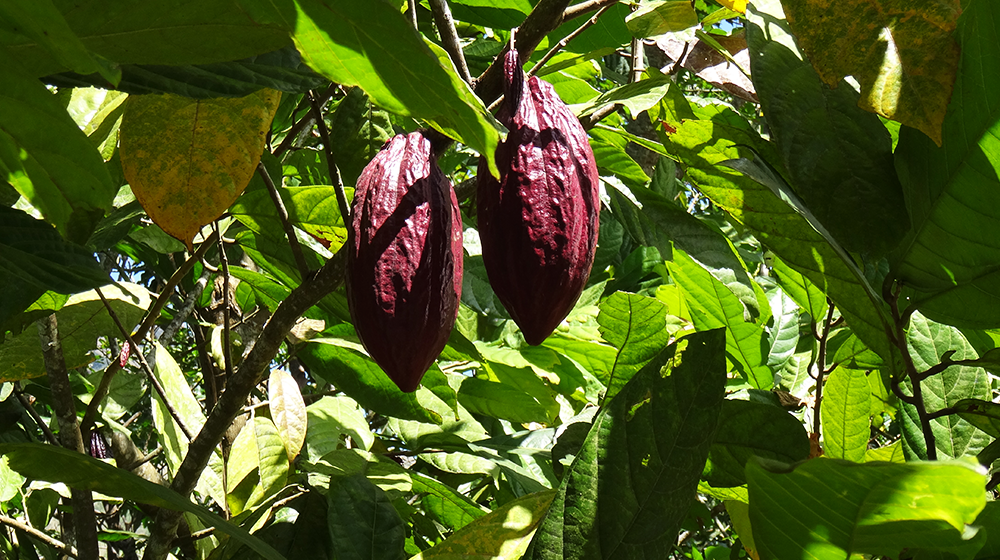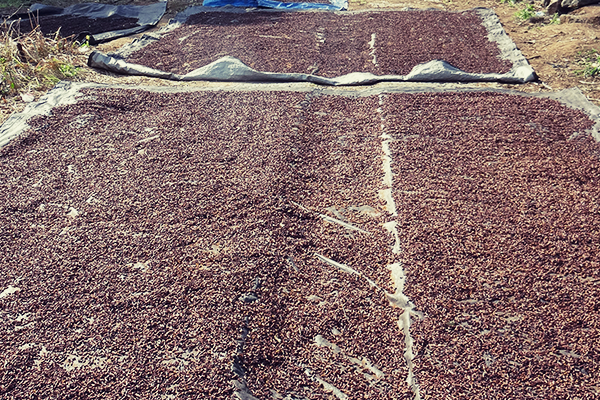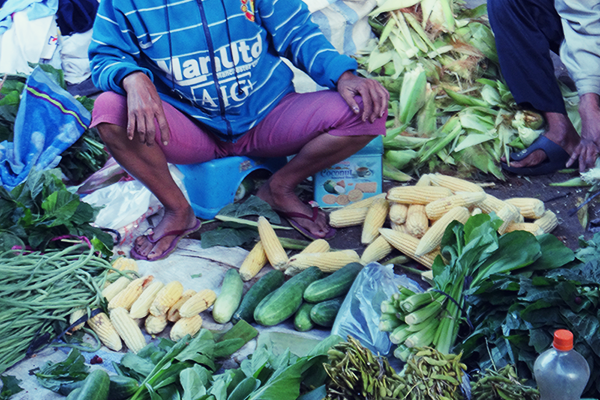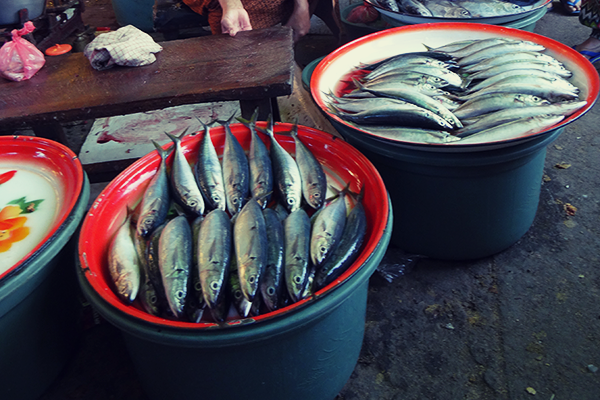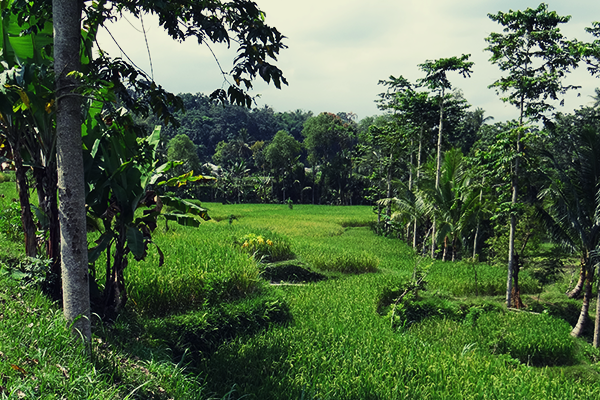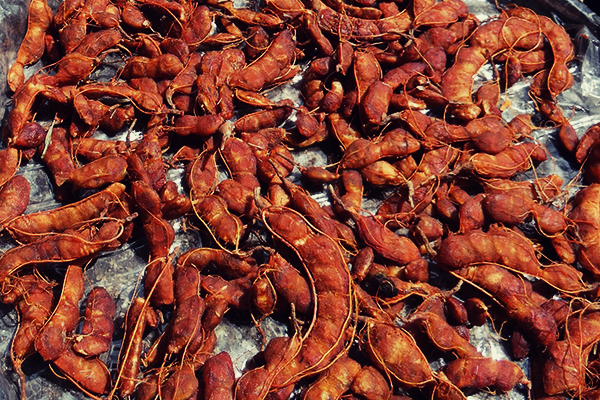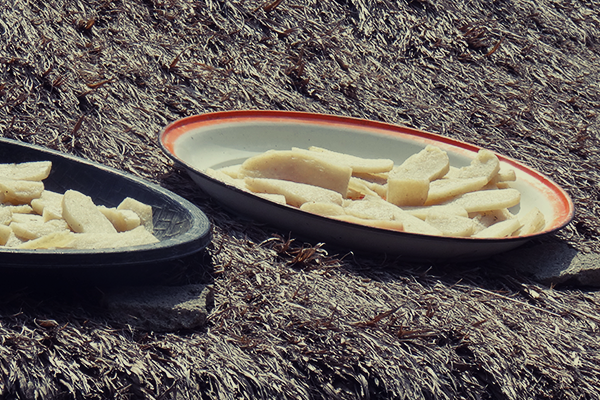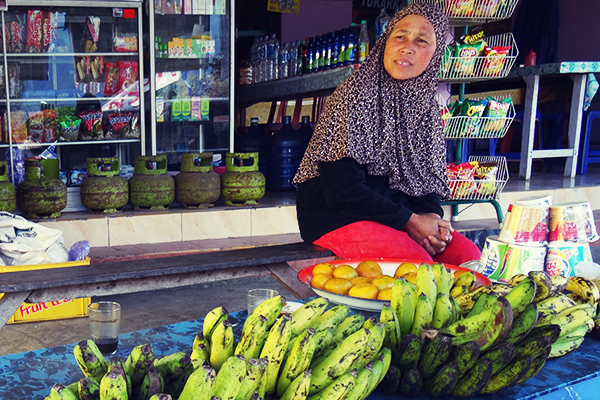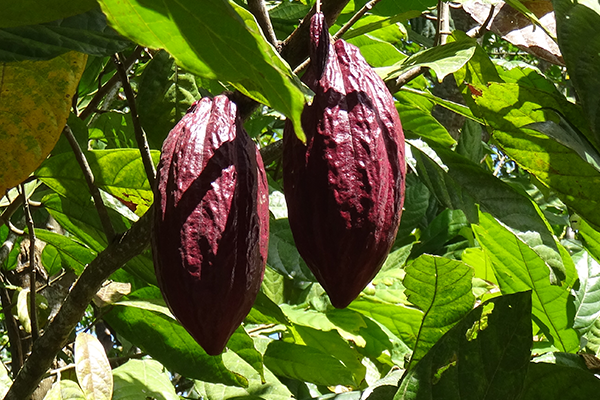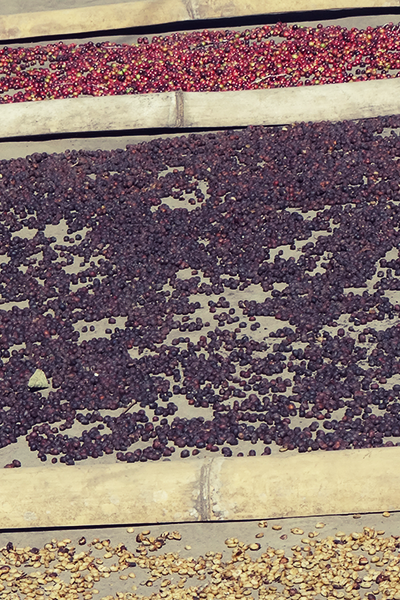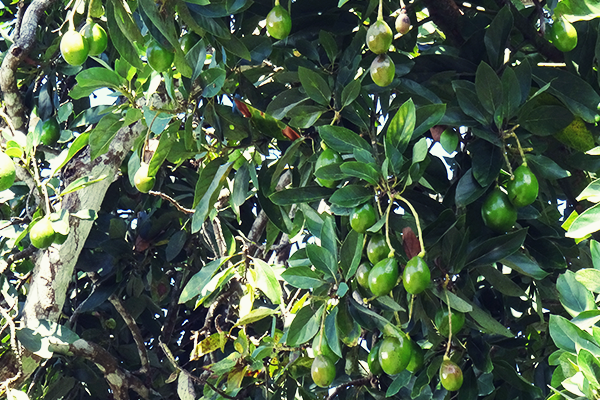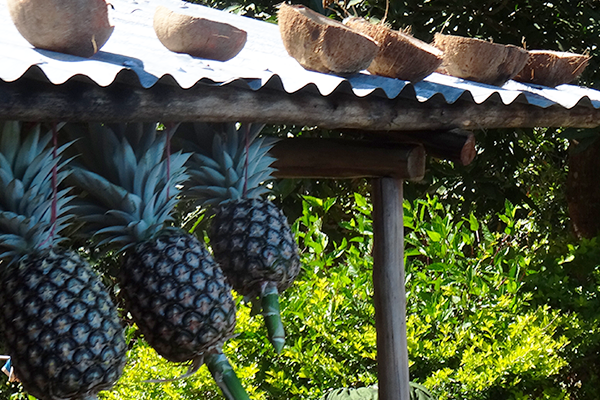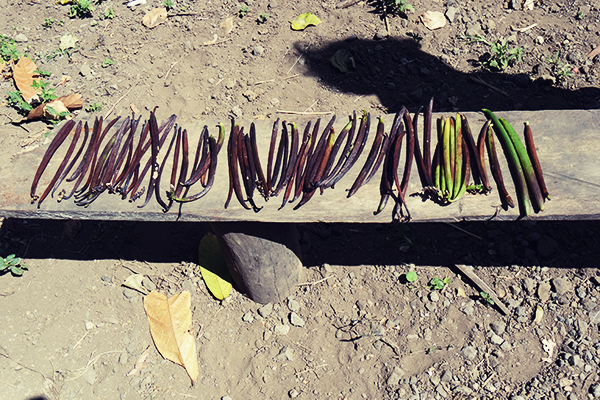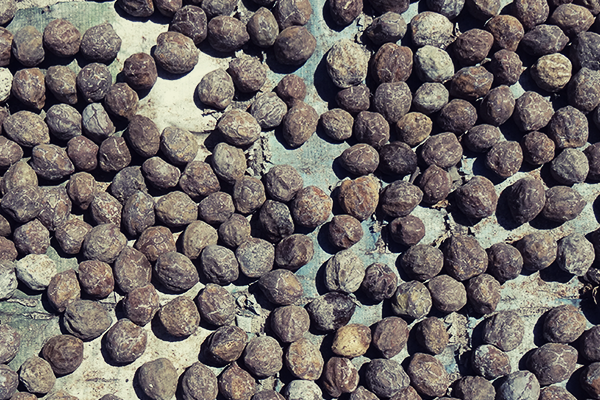While traveling on Bali, Lombok, Flores and Sulawesi, we spent quite some time with locals and local guides. We talked a lot about food, local veggies, fruit and spices. What veggies do we have back home? How do we use the spices it in our dishes? And did we recognize the product if it’s not waiting for us in our supermarkets. And yes we did! Since we love cooking, we were fascinated by all the local ingredients that nature offers us.
Let’s start with pointing out that we were not on a food tour, but we just love to try and find new local products! This is what we came across on Indonesian markets, at peoples homes and just ‘en route’!
Bali
Cloves
Cloves are the aromatic dried flower buds of a tree. Cloves come from the Myrtaceae family and are native to the Maluku Islands of Indonesia. Cloves also grow in other parts of Indonesia and for example India, Bangladesh and parts of Africa. The flower buds first have a pale hue, gradually turn green and then transition to a bright red when ready to be harvested. Cloves are harvested at 1.5–2.0 cm long. In Indonesia, almost the entire clove production stays within the country, because it is used a lot in cigarettes called kreteks. “Kreteks” is the name given by the locals because of the crackling noise when the ciggies are enlightened.
Markets
At the local market near Lovina in the north of Bali, we found all the delicious ingredients for the perfect Indonesian dish. A large variety of vegetables: courgettes, peppers, corn, beans, pak choi, different types of cabbage, sereh and much much more. Oh yes and fish of course – yeah we know it’s not a fruit or vegetable but it’s locally produced and very important in the Indonesian cuisine!
Lombok
Rice
Rice, rice, rice and more rice. We came across some beautiful rice fields on Central Lombok, near the Tetabatu waterfalls. If you go there: ignore the locals telling you that “you can only go for a walk with a guide”, go ahead and enjoy 🙂
Tobacco
Close to the Tetebatu waterfall, we also discovered a large field of tobacco plants. At first we did not realize it was tobacco, but luckily someone told us. The harvesting of the tobacco requires intensive and long work. The picking is done manually which is hard to imagine if you pay attention to the size of the fields and the amount of plants. Complete families, including kids, work on the fields to dry and select the tobacco plant leaves.
Indefinable red beans
In the Sasak Village Sade on Lombok, we came across something interesting of which we still don’t really know what is is. It looks like a type of bean and we thought of a bean with candle nuts but we already figured out on Flores that that would not be correct! If anyone knows, please do let us know 🙂
Bananas
Everywhere in Indonesia – basically in Asia – you will see bananas: tiny ones, large green bananas, plantains and bananas you eat at home. Bananas are used for breakfast, lunch, snacks, diner and can be eaten in many different ways. Popular is fried banana – pisang goreng – and dried banana chips.
Flores
Cacao
The fruits of the cacao tree look a little bit like elongated melons. The color of the fruits depends of ripening process. Each fruit contains 40-50 cacao beans, each about one gram. An average cocoa tree produces about 30 to 40 fruits a year, which equals 1 to 2 kg of cacao beans a year. Cacao trees can become relatively old with an average age of over 50 years. Once the tree start producing fruits – after about 4 years – it continuously produces stone fruits. Interesting is that the cacao fruits don’t grow well in the heat of the sun and therefore often cacao trees grow under so-called shade trees. Together with pulp, cacao beans are fermented by fungi and bacteria. This process lasts about 5 days, during this fermentation the temperature rises to 50 degrees. The germ will not survive and the beans change color from purple to brown. At last but not least – the most important 🙂 – the fermenting creates the flavor precursors for the chocolate taste. Cacao beans will be dried in the sun or in special drying houses, ready for export. The cacao trees we saw on Flores, near the village of Bena, were brown and almost ready to be harvested.
Coffee
Coffee beans
Coffee beans grow within a sort of berry. The berry will start growing with a green color and within about 8 months, turns into a red colored fruit. The green as well as the red cherries are being harvested. After harvesting, the process of separating the ripe and unripe berries starts. All berries are put in water: the berries that are ready to be used will sink and the unripe ones will not. The mature berries will be pressed with
a grid, the remaining pulp will ferment for two days. The beans will transferred outside and this is where the drying process comes in! The only thing needed is sun and to stir the coffee beans every few hours.
Coffee quality and taste
Coffee beans from Indonesia are, generally speaking, cultivated on small plantations and we have been told that the best Indonesian coffee comes from Java, Sumatra, Flores and Sulawesi. Indonesian coffee is characterized by strong and rich flavors. Initially, the coffee industry on Flores wasn’t known for high quality coffee, but in 2005 the Indonesia Coffee and Cocoa Research Institute changed its coffee methodology to a quality forward approach by introducing a special program. Nowadays Flores counts 12 neighboring cooperatives in Flores, all have been certified as organic. Coffee from Flores is known for sweet chocolate, floral and woody notes, it tastes earthy and smooth with background smokiness. We have not seen huge plantations are have the impressions that – although probably not enough – the locals do profit a little from their coffee plantations.
Coffee on Flores
Almost all of the coffee on Flores is Arabica. One of the most important changes that have taken place as part of the program, are the harvesting of only fully ripe berries, and the implementation of wet hull processing, which is called semi-washed. Beans are depulped, fermented and dried. As part of the plan, the drying takes place on special “beds”, on which the coffee is not in contact with soil and is exposed to enough air. However in the small village that we visited, coffee were drying in the sun just on the soil – the way it’s been done for ages we guess! Coffee on Flores is dried to a 30% to 35% moisture level while in its hull, it is then hulled, or milled while moist and the balance of drying will be continued. In the local Indonesia language Bahasa this process is called “giling basah”, which means “wet grinding”. Due to these methods green/blue coffees are produced on Flores. The processes are the reason for heavy body of the coffee of Flores with low acidity. We love coffee and the smell of it so we had to stop a few times just for the sake of smelling the coffee 🙂
Avocado’s
We were aware of the fact that Indonesia is known for its spices like cinnamon and cloves and there would be bananas. But we did not directly think of avocado’s! Although avocado’s originally come from Central America, we did found, bought and tasted them on Flores. The nutritious green oily fruit was delicious. The soft fruit contains consists mainly of unsaturated fats, contains many minerals and is rich in protein: the perfect energy for a traveler! As you could see on the photo, it was very inviting to pick the avocados in the wild ourselves, but we decided to support the locals and buy a few at the market: they were delicious.
Pineapples and coconuts
As seen on local markets, in trees on the beach or basically almost everywhere… Pineapples are the perfect sweet fruit and so gorgeous, it’s one of our favorites. Coconuts are not 🙂 At least not the raw version of it, we love a good coconut milk curry of course!
Vanilla
Originally from Mexico, the vanilla orchid offers the world the beautiful spice of vanilla. The fruits of the plant look like beans and are being picked while not yet ripe. As with the other spices, the fermentation process comes in: the moist vanilla beans will be heated and then slowly dried. This is where the unripe non aromatic fruits turn into a dark colored and shiny vanilla stick with its unique smell and flavor.
Candle nuts
We were only a bit familiar with candle nuts, since we used it twice in an Asian dish we made back home. Candle nuts are very oily, so they can burn and this is exactly why these nuts are called candle nuts. Candle nuts – locally called “kemiri” – look a little like macadamia’s but can not be eaten raw since the nuts are poisonous. The candle nuts shell is incredibly difficult to crush, so if you looking for kemiri in your local shop the nuts will not have their shells anymore. The bitter nuts are widely used in Indonesia and Malaysia and are popular to thicken sauces. Before using, the candle nuts will have to be heated in the oven and crushed in a mortar.
Feel free to share your thoughts on this article, the Quokka website, Flores or anything else by using our comment box!

